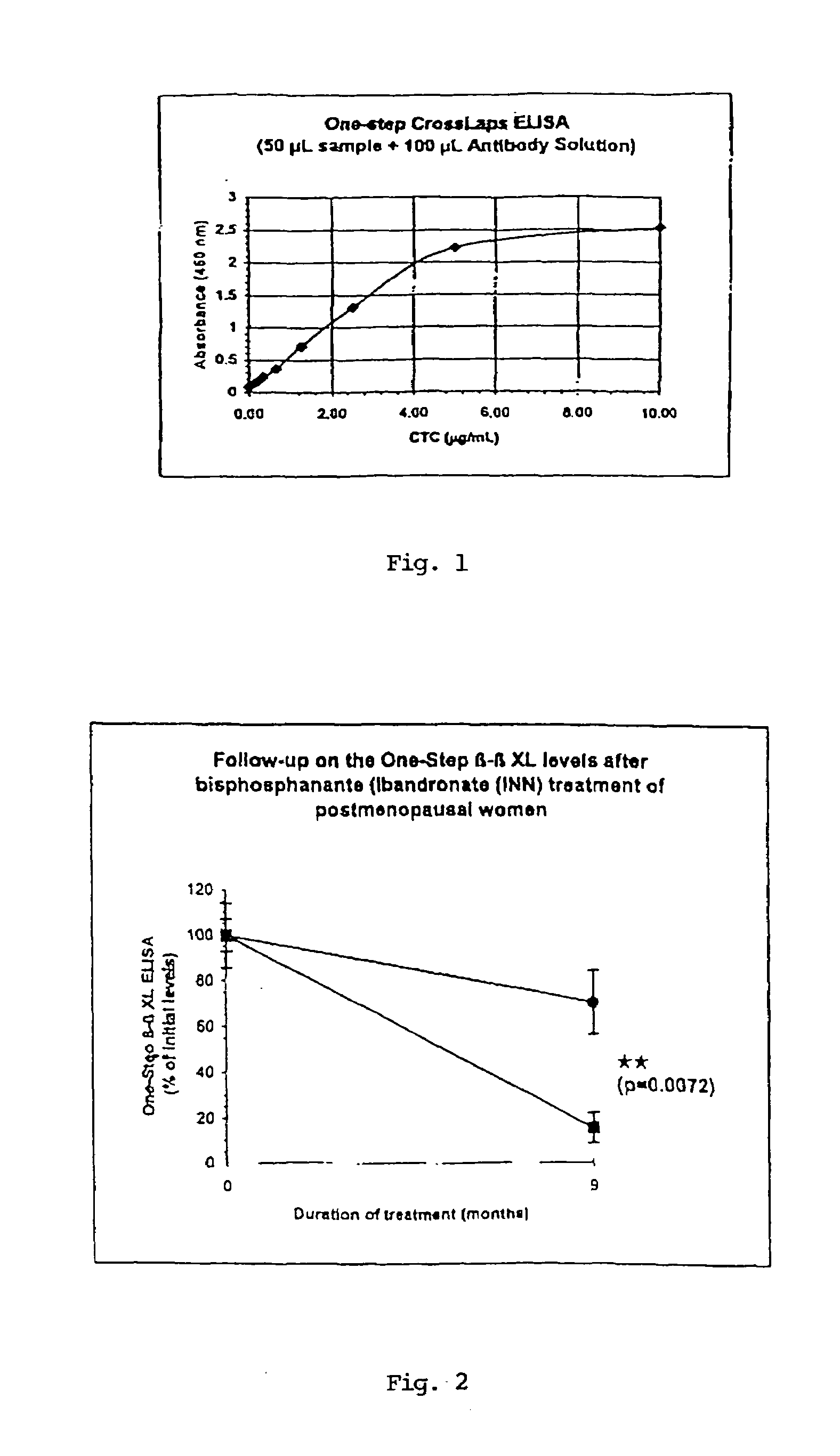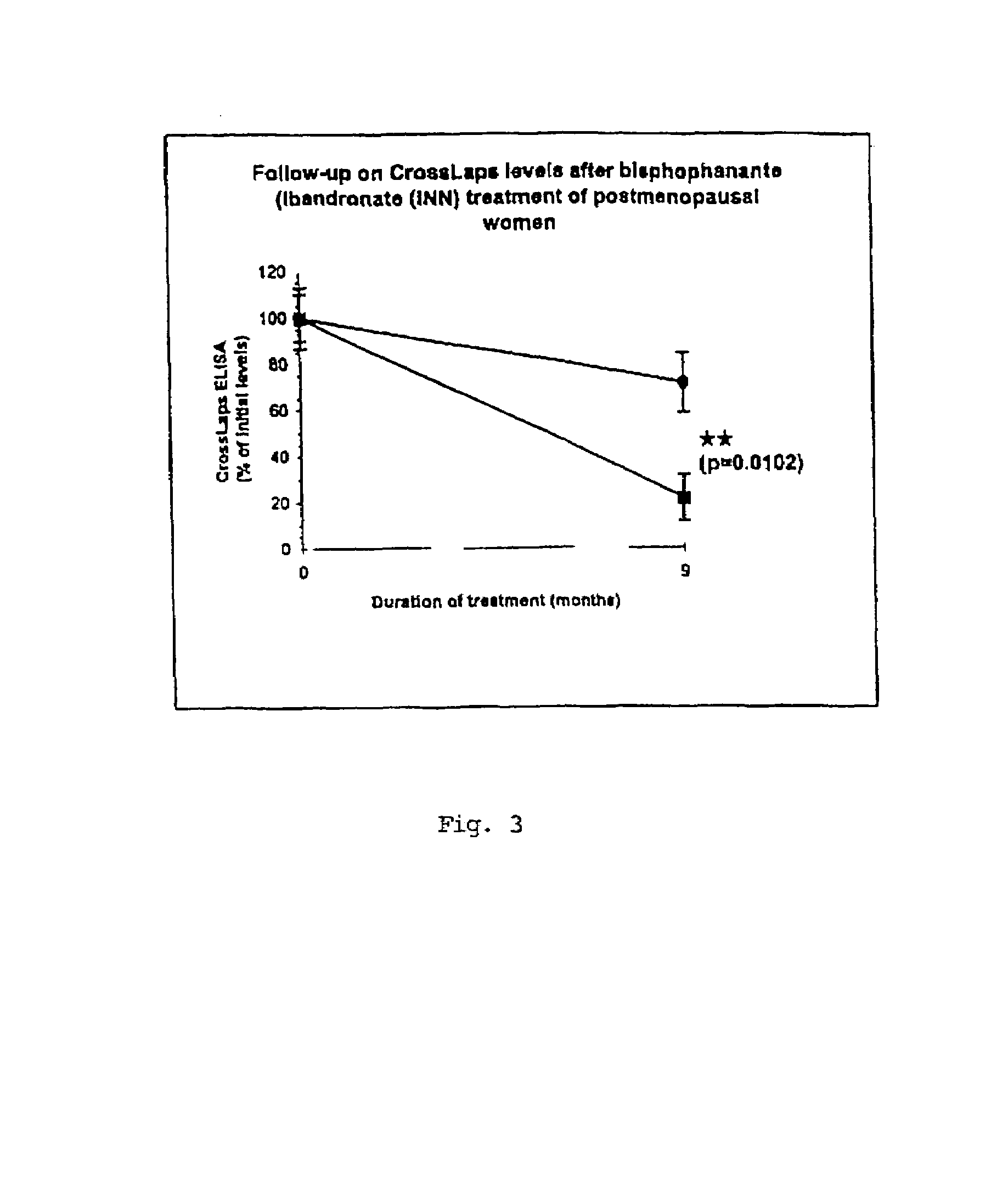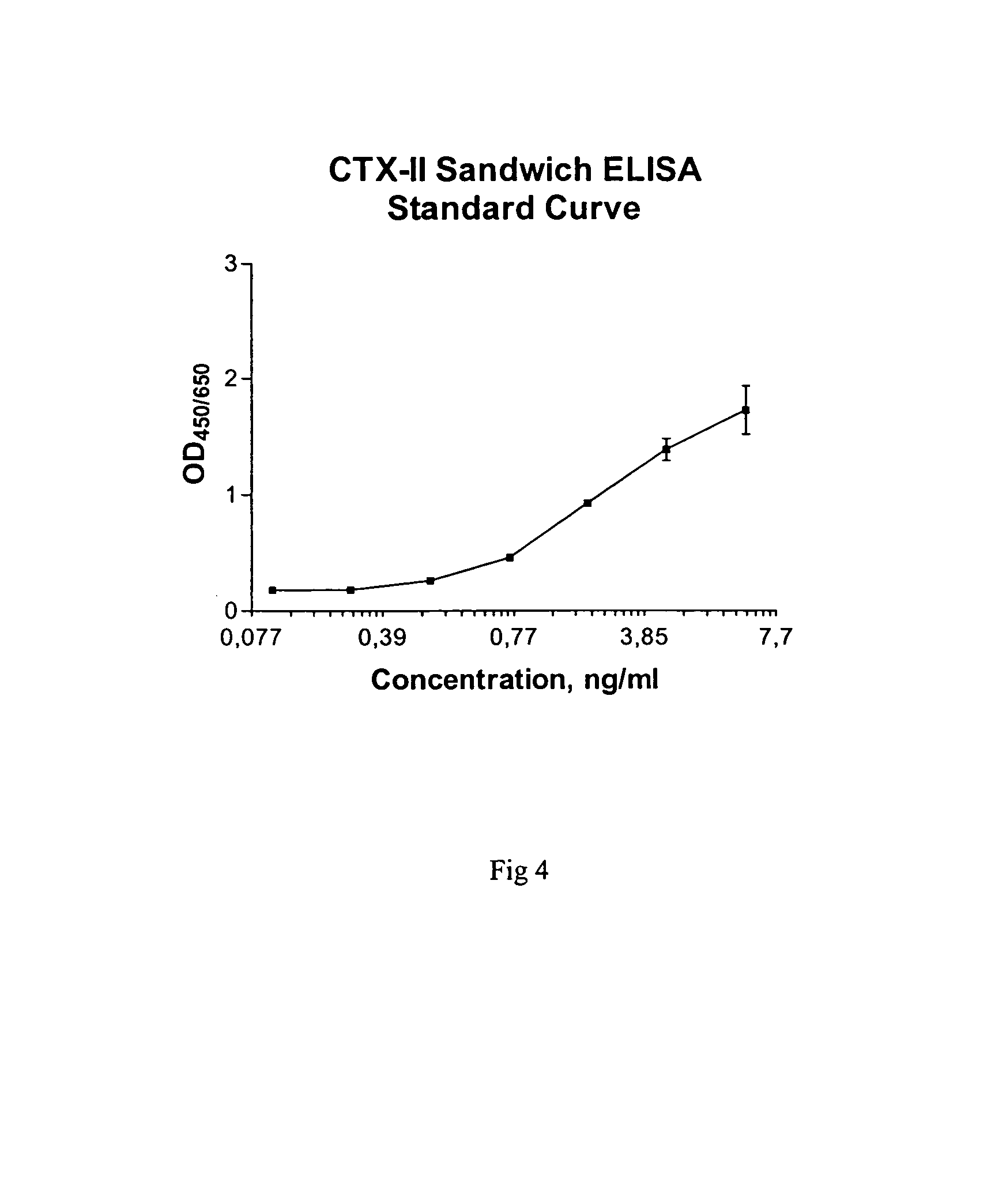Sandwich assays for collagen fragments
a technology of collagen fragments and assays, applied in immunoassays, instruments, material testing goods, etc., can solve the problems of difficult purification, difficult purification, and difficulty in obtaining assay results,
- Summary
- Abstract
- Description
- Claims
- Application Information
AI Technical Summary
Benefits of technology
Problems solved by technology
Method used
Image
Examples
example 1
7.1 Example 1
[0096]The present invention is in part based in part on the discovery that in serum there are collagen fragments which include an epitope present in the sequence EKAHDGGR or its above described variants and which have a molecular weight greater than that of fragments located previously in urine, indicating that such serum fragments will contain additional amino acid resi-dues against which a second antibody may be directed in a sandwich assay. The above mentioned collagen fragments discovered here are generated during bone resorption and their quantification can therefore be used for estimation of the rate of bone loss. This subpopulation of telopeptide fragments has not been measured previously.
[0097]The presence of these larger antigen fragments of collagen is demonstrated in this example.
[0098]Antigens reactive with a monoclonal antibody MabA7 raised against the non-isomerised L aspartate containing amino acid peptide sequence EKAHDGGR were affinity purified using th...
example 2
7.2. Example 2
[0104]90 ml human serum (HS) from a healthy 24 year old male donor was mixed on a whirlmixer and divided into 18 equally sized pools of 5 ml each. Three portions were kept at 4° C. until ELISA measurement. The last 15 portions were extensively dialysed against PBS for four days at 4° C. in Spectrum(™) dialysis tubing (DispoDialyzer(™)).
[0105]Three portions were dialysed in tubing with a molecular weight cut off (MWCO) of 1000 Da, three portions were dialysed in tubing with a MWCO of 3500 Da, three portions were dialysed in tubing with a MWCO of 5000, three portions were dialysed in tubing with a MWCO of 10000 and three portions were dialysed in tubing with a MWCO of 25000. Serum samples were weighed prior to an after dialysis in order to determine possible changes in sample volume. Finally all portions were assayed in the two serum ELISAs (α-CLS, β-CLS) in order to determine the antigen recovery in the retentate. The α-CLS assay measure fragments containing the normal ...
example 3
7.3. Example 3
7.3.1. Preparation of EKAH-βD-GGR Specific Monoclonal Antibodies
[0108]Two monoclonal antibody producing cell lines were separately obtained by the following procedures.
[0109]Female Balb / C*CF1 mice (8–12 weeks of age) were immunised intraperitoneally with 200 μl of an emulsion of complete Fruend's adjuvant and EKAH-βD-GGR conjugated to thyroglobulin (100 mg / L) by a carboiimide procedure. The conjugate and the adjuvant was mixed in equal volumes. Immunisations were repeated six times every 2 weeks using incomplete Freund's adjuvant. Three days prior to fusion the mice were boosted intraperitoneally with 100 μL EKAH-βD-GGR conjugated to thyroglobulin. Spleen cells and ATCC P3-X63-Ag8.653 (Kearney et al., J. Immunol 123:1548–50(1979)) myeloma cells were fused with 50% polyethylene glycerol (PEG 4000 GK) as previously described expect that human endothelial culture supernatant (HECS, Costar, The Netherlands) was used instead of feeder cells (Astaldi et al., J. Immunol 25:14...
PUM
| Property | Measurement | Unit |
|---|---|---|
| molecular weight | aaaaa | aaaaa |
| molecular weight | aaaaa | aaaaa |
| molecular weight | aaaaa | aaaaa |
Abstract
Description
Claims
Application Information
 Login to View More
Login to View More - R&D
- Intellectual Property
- Life Sciences
- Materials
- Tech Scout
- Unparalleled Data Quality
- Higher Quality Content
- 60% Fewer Hallucinations
Browse by: Latest US Patents, China's latest patents, Technical Efficacy Thesaurus, Application Domain, Technology Topic, Popular Technical Reports.
© 2025 PatSnap. All rights reserved.Legal|Privacy policy|Modern Slavery Act Transparency Statement|Sitemap|About US| Contact US: help@patsnap.com



